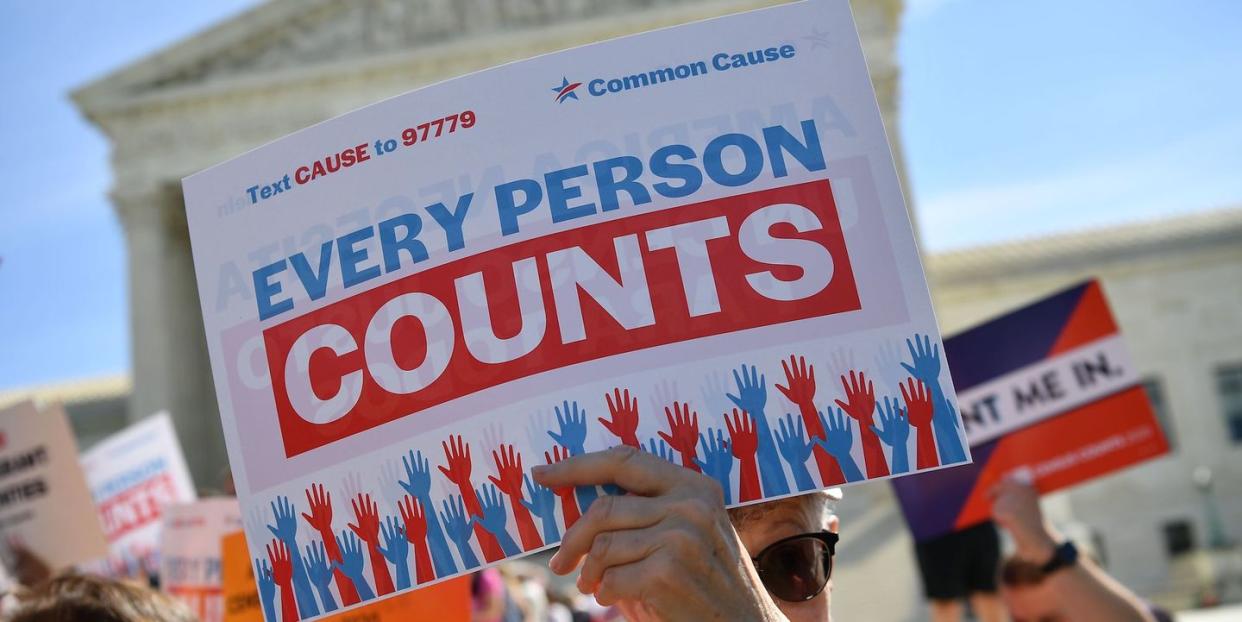New York's Census L Is a Reminder Our System Is Arbitrary and Nutty

On Monday, the United States Census Bureau released the results of its decennial survey of Americans and, crucially, where they live. This information is used to calculate how many seats in the House of Representatives each state will have—and consequently how many Electoral Votes it will have in the next presidential election—based on shifts in population. The top-line news is that New York, Pennsylvania, West Virginia, Ohio, Michigan, Illinois, and California each lost a seat. Oregon, Montana, Colorado, North Carolina, and Florida each gained one. Texas gained two.
The background absurdity here is that Congress has had the same total number of House seats—435—since the year 1920. The population of the United States at that point was 106 million. The population is now 331 million, but we've got the same number of seats, meaning each representative is representing many more people. That is unlikely to lead to a government that is more responsive to the varied needs of individual citizens. In the Atlantic last year, David Litt chalked the this up to politics: in 1920, Americans were flocking to cities, and rural lawmakers from both parties weren't interested in creating more seats to be elected out of these urban centers. So they capped it. Where in the first Congress, in 1789, each member had represented about 60,000 people, now they cover 761,000. We don't need to match the original proportions, but this is pretty nuts.
The real kicker, though, came with the news that New York would not have lost a seat if 89 more people in the state had registered for the Census this year. Eighty-nine. Not 89,000. By a margin of 89 people, the seat went to Minnesota instead. (Some legal action is likely to ensue. RECOUNT!) This doesn't necessarily mean that one party or the other just lost a House seat—the redistricting process will do far more to determine the partisan breakdown—but it does mean that New York is worth one fewer Electoral Vote, and that each New York member of Congress is tasked with representing the interests of 777,529 people. In Montana, which just picked up a seat, each of the two members will represent 542,704.
New York isn't even the worst off in that regard, but the arbitrary nature of all this leaves it in the area where fine margins and bad luck bleed into the outright absurd. There are more people living in New York now than 10 years ago, but they get one fewer representative. Same for California, which picked up more than 2 million people only to lose a seat. New York has lost seats every 10 years—sometimes as many as five—since 1950, even though the state's population has steadily grown. You can say them's the rules, but it would be easier if there was some justification for all this beyond "that's the way it is." The Electoral College was close to delivering another nonsense result last year, where a candidate nearly won an election where his opponent got 7 million more citizens' votes.
The roiling chaos of life is unavoidable, and humans are doomed to forever find themselves building fragile social structures on shaky ground. Your system will always, at some point, have arbitrary features. But in this country we seem determined to build things in a completely ad hoc fashion, fastening them on top of each other in precarious arrangements and putting the integrity—and democratic legitimacy—of the system at more risk than necessary. An alternate response to a growing population, for instance, would be to have more seats in Congress. The person who gets more citizens' votes in the election could win the election.

Join Esquire Select
You Might Also Like

